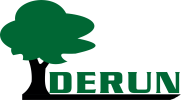










The main function of activated carbon is adsorption. It can adsorb substances from the liquid or air, so as to play the role of filtration or selection. How does activated carbon work for solvent recovery in raw material medicine? Today we introduce activated carbon for the purification of DCM.
DCM is an abbreviation for dichloromethane.
In the API industry, commonly used organic solvents are dichloromethane (DCM), chloroform (chloroform), acetone, toluene, ethyl acetate, tetrahydrofuran, N-dimethylformamide (DMF), ethanol, etc., of which DCM, which is one of the halogenated hydrocarbons, is very common.
In most cases, DCM is a nonflammable low boiling point solvent, its molecular formula is CH2Cl2, CAS registration number is 75-09-2, molecular weight is 84.93, boiling point is 39.75℃ (at 760mmHg), and the lower explosion limit is 14%v/ v, slightly soluble in water, soluble in ethanol and ether. After pyrolysis of DCM, HCl and a trace amount of phosgene (also known as phosgene, chemical formula COCl2Phosgene) are generated; long-term heating with water generates formaldehyde and HCl; further chlorination can obtain CHCl3 and CCl4, which are colorless and volatile liquids, Difficult to burn. When DCM is mixed with acetone or methanol liquid in a ratio of 10:1, the mixture has a flash point, and the vapor and air form an explosive mixture with an explosion limit of 6.2% to 15.0% (volume).
Dichloromethane is a colorless liquid, which is mainly used in film production and medicine in China. It is used as a reaction medium in the pharmaceutical industry for the preparation of ampicillin, oxypicillin, and cephalosporin, etc.; it is also used as a solvent in film production, petroleum dewaxing solvent, aerosol propellant, organic synthesis extractant, polyurethane and other foams Foaming agent and metal cleaning agent for plastic production.
DCM adsorption recovery device is composed of a pretreatment system, adsorption system, desorption system, drying and cooling system, recovery system, and automatic control system.
The DCM organic solvent is adsorbed and captured by activated carbon, and the saturated activated carbon is fed into saturated steam for desorption. The desorbed product is cooled by a condenser and separated in a stratification tank. The separated pure dichloromethane liquid is pumped to the customer storage tank for reuse.
The recovery system is a system consisting of a condenser, a separation device and a deep cooler. The desorbed mixed gas containing water vapour and dichloromethane vapour passes through a condenser and becomes a mixed liquid that flows into a specially designed separation device. Separate the water-insoluble dichloromethane from water; the separated dichloromethane is pumped into the customer’s solvent storage tank for recycling.
For DCM purification, we usually choose pellet activated carbon with high iodine. Columnar activated carbon is made from anthracite coal and is manufactured by high pressure pressing. It is often used in various deodorization occasions, as well as in air purification, waste gas treatment and other operations.
What Are The Differences Between Impregnated Activated Carbon And Ordinary Activated Carbon?
Application of coal-based activated carbon in environmental protection field
The Principle And Effect of Activated Carbon Adsorption of Formaldehyde
Application of coal-based activated carbon in flue gas desulfurization and denitrification
